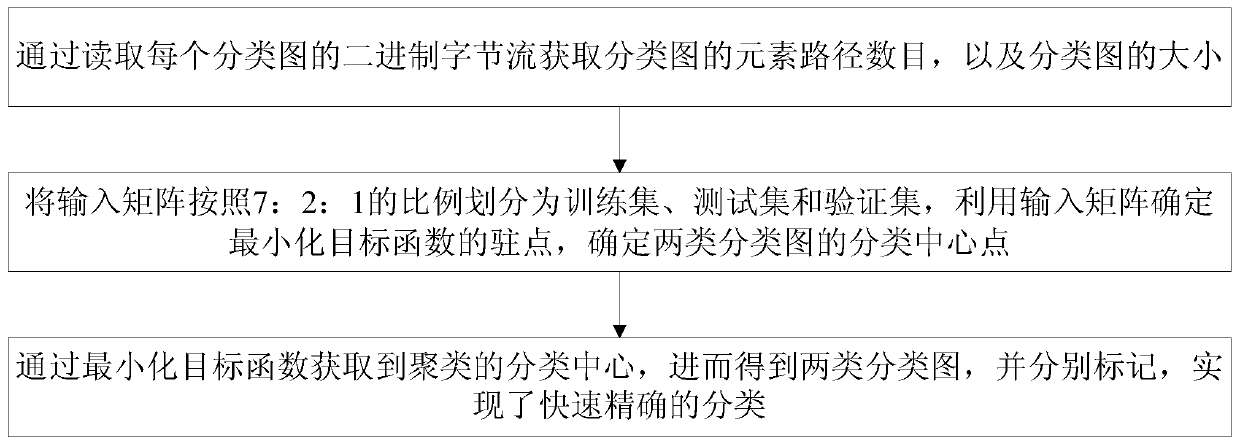A method for improving the classification accuracy of a vector graph bitmap
A precision and vector graphics technology, applied in the direction of instruments, character and pattern recognition, computer components, etc., can solve the problems of low accuracy, inaccurate classification, wrong classification, etc., and achieve the effect of improving precision and classification accuracy
- Summary
- Abstract
- Description
- Claims
- Application Information
AI Technical Summary
Problems solved by technology
Method used
Image
Examples
Embodiment 1
[0036] An embodiment of the present invention provides a method for improving the classification accuracy of vector graphics bitmaps, see figure 1 , the method includes the following steps:
[0037] 101: Obtain the number of element paths of the classification diagram and the size of the classification diagram by reading the binary byte stream of each classification diagram;
[0038] In the specific implementation, the number of element paths and the size of the classification map are put into a two-dimensional feature vector as labels, that is, each two-dimensional feature vector is composed of the element path and the size of the classification map. The feature vector is converted into an n*2 matrix, which is used as the input matrix of the classification map.
[0039] 102: Divide the input matrix into training set, test set and verification set according to the ratio of 7:2:1, use the input matrix to determine the stationary point of minimizing the objective function, and ...
Embodiment 2
[0050] Combined with the specific calculation formula, figure 1 The scheme in Example 1 is further introduced, see the following description for details:
[0051] 201: Perform two-dimensional feature vector extraction on samples composed of batch classification graphs, mainly for obtaining the number of element paths;
[0052] Among them, in a vector map or bitmap, there are 0-50000 element paths. The attributes of these paths are different, and the image features represented are also different. If multi-dimensional path features are added, the learning effect is very poor at this time. The embodiment of the present invention performs dimensionality reduction processing on many features, and only considers the one-dimensional feature of the number of element paths in different classification graphs.
[0053] In actual implementation, the size of the classification map is also a relatively important feature of the classification map. If the size of the classification map is us...
Embodiment 3
[0071] Below in conjunction with concrete example, table 1, figure 2 1. Carry out feasibility verification to the scheme in embodiment 1 and 2, see the following description for details:
[0072] The embodiment of the present invention obtains the number of element paths of the classification diagram through classification diagram analysis, and obtains the size of the classification diagram, puts two labels into a two-dimensional feature vector, and uses several feature vectors to form a sample matrix as an input matrix for clustering Learn.
[0073] The purpose of adopting cluster analysis in the embodiment of the present invention is to analyze whether the data belong to each independent group, so that members in one group are similar to each other but different from members in other groups. It analyzes a collection of data objects, but unlike classification analysis, the divided classes are unknown. Therefore, cluster analysis is also called unsupervised or unsupervised (...
PUM
 Login to View More
Login to View More Abstract
Description
Claims
Application Information
 Login to View More
Login to View More - R&D
- Intellectual Property
- Life Sciences
- Materials
- Tech Scout
- Unparalleled Data Quality
- Higher Quality Content
- 60% Fewer Hallucinations
Browse by: Latest US Patents, China's latest patents, Technical Efficacy Thesaurus, Application Domain, Technology Topic, Popular Technical Reports.
© 2025 PatSnap. All rights reserved.Legal|Privacy policy|Modern Slavery Act Transparency Statement|Sitemap|About US| Contact US: help@patsnap.com



